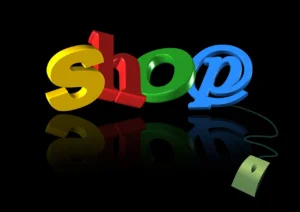When starting your Amazon FBA journey, finding and executing the perfect product idea can seem daunting. But don’t worry! With the right approach, you can transform a simple concept into a successful product that captures attention and generates sales. This blog will explore how to create unique Amazon FBA product ideas, design them, and effectively launch them on the marketplace. Let’s dive into the exciting process of how to find products to sell on amazon in 2025 that turning dreams into reality!

Why Your Amazon FBA Product Idea Matters
Before diving into the technicalities, let’s talk about the importance of your product idea. Your product is the cornerstone of your business—it’s what drives sales, builds your brand, and sets you apart from competitors. Choosing the right product means:
- Attracting customers with unique and valuable features.
- Establishing your brand as a leader in your niche.
- Increasing the chances of getting positive reviews and repeat customers.
Key takeaway: A strong product idea gives you a competitive edge and sets the stage for long-term success.
Proven Strategies for Winning Product Ideas
If you’re looking to start an Amazon FBA business , the first and most crucial step is finding the right product to sell. With millions of products already on the platform, standing out can be a challenge. The key to success lies in finding products that meet market demand while offering something unique. This article outlines proven strategies to help you how to find products to sell on amazon in 2025 discover winning products to sell.
1. Solve a Problem
One of the most effective ways to find a winning product is by solving a specific problem or pain point that customers face. People are always on the lookout for solutions that make their lives easier, more efficient, or enjoyable. If you can identify a problem and provide a product that addresses it, you’re likely to attract a loyal customer base.
How to Find Products That Solve Problems:
Browse Amazon Reviews: A quick way to uncover unmet needs is by reading customer reviews on Amazon. Customers often leave detailed feedback, including complaints and suggestions for improvement. Look for recurring themes in negative reviews, such as poor quality, lack of durability, or inconvenient design.
Identify Pain Points in Existing Products: Take note of products that customers have issues with and think about how you can improve them. For example, if people are complaining that a particular type of kitchen gadget breaks easily, you could develop a more durable version with stronger materials.
Address Functional, Size, or Compatibility Issues: Many products have functional limitations. Look for ways to design a product that offers better functionality, or consider making it more adaptable to different situations. For instance, a universal phone stand that fits all phone models could fill a gap in the market.
Example: If you’re considering selling kitchen gadgets, think about tools that could improve efficiency, like a multi-functional gadget that solves multiple kitchen tasks, saving both time and space.
2. Explore Trending Niches
Keeping an eye on trends is crucial for identifying hot products before they become saturated. Trends evolve quickly, especially with the rise of social media platforms and digital tools. Being ahead of the curve can position you as an early mover in a new market, giving you a competitive edge.
Where to Find Trending Products:
Google Trends: This tool helps you track the popularity of specific search terms over time. By entering keywords related to your niche, you can spot rising trends and see if the demand for a particular product is increasing.
Pinterest: Pinterest is an excellent platform for discovering new ideas and trending products, especially in the lifestyle, fashion, and home décor categories. By exploring popular pins and boards, you can identify emerging trends and find products that could work well on Amazon.
TikTok: TikTok is a treasure trove for viral products. Many successful Amazon sellers have discovered trending products by monitoring viral TikTok videos. Search through trending hashtags or explore influencer content to find the next big thing before it becomes wid

How to Find Products to Sell on Amazon in 2025 ely popular.
Industry Blogs and Magazines: Subscribe to industry publications and blogs that cover trends in specific niches. Whether you’re into health and wellness, beauty, or tech gadgets, these sources can give you valuable insight into what’s likely to take off in the coming months.
Example: If you’re interested in the home décor niche, check out Pinterest for trending designs, such as minimalist furniture or eco-friendly home accessories. Combining current trends with your own unique spin can create a winning product.
3. Analyze Competitors
Understanding what your competitors are doing is key to identifying successful products and finding opportunities for improvement. While it’s important to be aware of what others are offering, it’s even more crucial to find ways to differentiate yourself and offer something better.
Steps to Analyze Competitors:
Study Their Listings: Look at your competitors’ product listings on Amazon. What are they doing well, and where are they lacking? Pay attention to their product descriptions, images, and customer reviews. What are customers complaining about, and how can you address those issues with your product?
Examine Sales Data: Use tools like Jungle Scout or Helium 10 to gain insights into competitor sales and performance. These tools can help you estimate monthly sales, revenue, and product ranking. By analyzing this data, you can identify successful products and explore ways to offer something better.
Look for Differentiation Opportunities: Find ways to improve upon your competitors’ products. Whether it’s by offering a unique feature, superior quality, or a more attractive price, identifying gaps will help you position your product more effectively.
Example: If you notice that a competitor is selling a popular portable charger but receiving complaints about battery life, you could find a supplier who offers a longer-lasting alternative. Or you could bundle your charger with a high-quality carrying case to add more value.
4. Leverage Alibaba for Inspiration
Alibaba is one of the best platforms to explore product ideas. It’s a massive marketplace that connects suppliers and manufacturers with businesses worldwide. Many successful Amazon FBA sellers start their journey by browsing Alibaba to find trending products and then work to improve or customize those products to create a unique selling proposition (USP).
How to Use Alibaba to Find Winning Products:
Browse Categories: Explore Alibaba’s extensive product catalog to discover trending items in various categories, such as electronics, home goods, and beauty. Look for products with high demand but low competition.
Identify Customization Opportunities: Many suppliers on Alibaba offer products that can be customized with your branding, color options, and packaging. By adding a unique feature or improving the product’s design, you can differentiate yourself from other sellers.
Check Supplier Reviews and Ratings: Ensure that the suppliers you are considering have good ratings and reviews from previous buyers. It’s important to establish a relationship with trustworthy suppliers who can provide high-quality products.
Example: If you’re interested in fitness products, you might discover innovative resistance bands or smart gym equipment on Alibaba. Consider how you could improve these products or offer bundles with complementary items like a workout guide or storage bag.
5. Combine Ideas for Innovative Products
Sometimes the best product ideas come from merging two different concepts or features into one innovative solution. This approach allows you to address multiple pain points or appeal to a broader audience by offering something that no one else is currently offering.
How to Combine Ideas:
Solve Multiple Problems at Once: Think about how a product could address several different customer needs. For example, a travel bag that serves as both a backpack and a suitcase could appeal to travelers looking for versatility.
Merge Different Product Categories: Consider combining products from different niches to create a bundle that provides more value. For example, if you sell home office furniture, you could bundle a desk with ergonomic accessories, such as a chair cushion and keyboard stand.
Innovate Existing Products: Look for two products that serve similar functions but in separate categories. Combine their best features into one unique product that appeals to customers looking for convenience or efficiency.
Example: If you’re interested in the pet products niche, you could combine a dog bed with a pet blanket that has heating elements. This would cater to pet owners looking for comfort and warmth for their pets during colder months.
Bringing Your Amazon FBA Product Idea to Life: A Comprehensive Guide to Launching in 2025
Once you’ve identified the perfect product idea through effective research (as covered in our guide on How to Find Products to Sell on Amazon in 2025), the next step is transforming that idea into a market-ready product. This process involves designing, branding, testing, and launching your product in a way that sets you up for success on Amazon. Below is a detailed guide to help you bring your product to life and create a strong, marketable offering that stands out in the crowded Amazon marketplace.
1. Designing Your Product
The first step in bringing your Amazon FBA product idea to life is product design. Whether you’re crafting a brand-new product or improving an existing one, your design should reflect both functionality and aesthetic appeal. Start by sketching your ideas and communicating them clearly with potential suppliers.
Tips for Effective Product Design:
Create Visual Mockups: If you don’t have professional design skills, use tools like Canva or Photoshop to create rough visual representations of your product. This helps suppliers understand your vision.
Work with Suppliers: Send these mockups and sketches to your suppliers for feedback and to ensure they understand your vision. You can provide detailed notes on the product’s size, materials, colors, and features.
Hire Professionals: If you want a more polished design, platforms like Fiverr or Upwork offer affordable freelancers who specialize in product design. A professional design can reduce the chances of miscommunication and help you achieve a superior final product.
Pro Tip: Be specific in your design requirements. The more details you provide (such as materials, dimensions, and colors), the closer your final product will match your expectations.
2. Packaging and Branding
Packaging plays a pivotal role in the success of your Amazon FBA business. It serves not only as a protective barrier but also as an essential element of your brand’s identity. Well-designed packaging can elevate your product, differentiate it from competitors, and leave a lasting impression on customers.
Steps to Create Standout Packaging:
Choose High-Quality Materials: Select materials that align with your brand’s positioning. For example, premium items might benefit from wooden boxes or custom packaging that feels more luxurious.
Design with Branding in Mind: Use vibrant colors, creative designs, and your logo to build brand recognition. Packaging should be both functional and visually appealing to draw attention.
Highlight Product Benefits: Incorporate key benefits of the product right onto the packaging. A succinct description of how the product solves customer pain points can increase conversions.
Why Packaging Matters:
Conveys Your Brand’s Personality: Packaging is an extension of your brand’s story and values. A sleek, minimal design may convey sophistication, while eco-friendly materials may speak to sustainability-minded customers.
Differentiates Your Product: With so many options available on Amazon, exceptional packaging can help your product stand out, even in a crowded market.
3. Testing and Sampling
Before you dive into ordering large quantities of inventory, it’s essential to test the product to ensure its quality and functionality. Product sampling allows you to evaluate whether your design meets expectations and gives you an opportunity to make adjustments before committing to large-scale production.
Why Testing is Crucial:
Verify Material and Design Quality: Request samples from your supplier to check that the materials and design meet your standards. Test for durability and functionality to ensure customers will have a positive experience.
Test the Product in Real-World Conditions: Use the sample in practical situations to assess its performance. For example, if you’re selling outdoor gear, test its waterproof capabilities or overall usability.
Identify Areas for Improvement: Even if you love the first sample, there might be small tweaks needed. Whether it’s adjusting sizing or changing materials, the testing phase helps you refine the product.
4. Launching Your Amazon FBA Product
Once your product is ready, it’s time to launch. Launching a new product on Amazon can feel daunting, but with the right strategy, you can set your product up for success.
Focus on High-Quality Photos
The photos of your product are often the first impression potential buyers have of it. Invest in professional photography to showcase your product from multiple angles. Use lifestyle images to help customers envision the product in real-world settings.
Multiple Angles: Show your product from various angles to highlight its key features.
Lifestyle Images: Help potential buyers visualize how the product will fit into their lives (e.g., a kitchen gadget being used in a home).
Avoid Text on Images: Amazon doesn’t allow text or graphics on product images, so let the product itself tell the story. Use the product’s packaging to communicate key benefits instead.
Highlight Your Unique Selling Proposition (USP)
Your Unique Selling Proposition (USP) is what sets your product apart from others in the market. During the launch phase, it’s essential to communicate your USP clearly to potential customers.
Product Title and Bullet Points: Use the product title and bullet points to emphasize your product’s unique features, improvements, or added benefits.
Address Customer Pain Points: In your product description, focus on how your product solves specific customer challenges or meets a particular need.
Pro Tip: Don’t just focus on price. Highlight the added value your product offers in terms of features, quality, or customer experience.
Launch with an MVP (Minimum Viable Product)
Instead of waiting for perfection, consider launching your product with a Minimum Viable Product (MVP). This means releasing a product with essential features that meet customer needs but still allows room for improvement based on real-world feedback.
Benefits of an MVP Launch:
Gather Feedback: An MVP launch allows you to collect valuable feedback from early customers to refine and improve the product.
Avoid Perfection Paralysis: Launching an MVP helps you avoid the trap of endlessly tweaking your product and missing out on sales opportunities.
Speed to Market: An MVP lets you enter the market faster and start generating sales sooner.
5. Leverage Marketing Strategies
Marketing is key to getting your product noticed on Amazon and driving traffic to your listing. There are several strategies you can use to boost visibility and increase sales.
Amazon PPC Ads: Amazon’s pay-per-click (PPC) ads allow you to target relevant keywords, driving traffic to your product page. Use this tool to increase your product’s visibility in search results.
Social Media Marketing: Platforms like Instagram and TikTok are powerful tools for creating buzz around your product. Use these platforms to engage with your audience, post lifestyle photos, and offer promotions.
Influencer Collaborations: Partner with influencers in your niche to promote your product to their audience. Influencers can help you reach a broader, more targeted customer base.
6. Continuous Improvement and Scaling
Once your product is live, the work doesn’t stop. Constant improvement and scaling are essential to long-term success.
Use Customer Feedback to Improve:
Refine Product Features: Pay attention to reviews and use constructive criticism to make meaningful improvements to your product.
Enhance Packaging: Customer feedback may also highlight opportunities for packaging improvements.
Expand Your Product Line: Once you’ve gained traction with your initial product, consider expanding your product line with complementary items or variations.
Pro Tip: Even small improvements, like upgrading materials or offering bundle deals, can significantly impact customer satisfaction and sales.
Conclusion
Transforming your product idea into a reality requires careful planning, design, testing, and marketing. By focusing on high-quality design, standout packaging, a strong launch strategy, and continuous improvements, you can successfully bring your product to life on Amazon and position it for long-term success.
Following the steps in this guide, you’ll be well-equipped how to find products to sell on amazon in 2025 to turn your product concept into a thriving business and beyond. So, take action today, refine your product based on customer feedback, and start building a brand that resonates with your target audience.

FAQs
Q: What are the best tools for researching Amazon FBA product ideas? A: Jungle Scout, Helium 10, and Google Trends are excellent tools for finding profitable niches and understanding customer demand.
Q: How do I ensure my product stands out on Amazon? A: Focus on a strong USP, high-quality images, professional packaging, and solving customer pain points.
Q: Should I hire a designer for my product? A: If you lack design expertise, hiring a designer from platforms like Fiverr or Upwork can save time and improve your product’s quality.
Q: How much should I invest in an MVP? A: Start with a manageable budget for initial production and use customer feedback to guide further investment.
Q: How can I keep improving my product after launch? A: Use customer reviews and feedback to identify areas for improvement and incorporate these into future production runs.
Starting your Amazon FBA journey how to find products to sell on amazon in 2025 might feel overwhelming, but with the right mindset and strategies, you can create and launch a product that stands out and thrives. Remember, action beats perfection. Start small, learn from feedback, and watch your business grow. Let’s turn those Amazon FBA product ideas into reality!






